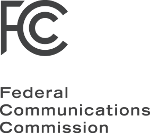FCC proposed rule change to support ATSC 3.0 distributed transmission
Tuesday, March 31st, 2020
FCC Seeks Comment On Proposed Change To Distributed Transmission System Rules To Support Use Of Next Generation TV Broadcast Standard
WASHINGTON — The Federal Communications Commission today adopted a Notice of Proposed Rulemaking seeking comment on proposed technical rule changes to facilitate the use of the next generation television broadcast standard, also known as ATSC 3.0. The proposed rules would permit greater flexibility for broadcasters to use distributed transmission systems (DTS) as they deploy ATSC 3.0 in their networks. DTS employs two or more transmission sites located around a station’s service area, each using the same RF channel and synchronized to manage self-interference. DTS can permit broadcast signals to serve hard-to-reach viewers, improve indoor and mobile reception, and more efficiently use TV spectrum.
In November 2017, the FCC authorized broadcast TV stations to use the ATSC 3.0 transmission standard. By the end of this year, it is anticipated that broadcasters will begin commercial service using ATSC 3.0 in the 40 largest markets and manufacturers will roll out 20 TV models supporting this standard. The ATSC 3.0 standard could enable broadcasters to provide consumers with more vivid pictures and sound, including Ultra High Definition television and superior reception, mobile viewing capabilities, advanced emergency alerts, better accessibility features, localized content, and interactive educational children’s content. The transition from ATSC 1.0 to 3.0 is a voluntary, market-driven transition by TV stations, all of which will also continue to broadcast using the current ATSC 1.0 standard.
America’s Public Television Stations and the National Association of Broadcasters petitioned the Commission to change its DTS rules. The current DTS rules were adopted more than a decade ago during the nationwide transition to digital TV. With the Notice of Proposed Rulemaking adopted today, the Commission seeks comment on whether and how to permit DTS signals to spill over beyond a station’s authorized service area by more than the “minimal amount” currently allowed. The FCC also seeks comment on potential impacts to other spectrum users, such as TV translators and low-power TV stations, and whether to modify the DTS rules as they relate to Class A and LPTV licensees. Lastly, the agency invites comment on whether and to what extent the proposed changes are also appropriate for stations broadcasting in ATSC 1.0.
Latest News
- Barb to start reporting TV-set viewing of YouTube channels
- SAT FILM selects multi-DRM from CryptoGuard
- Qvest and ARABSAT to launch OTT streaming platform
- ArabyAds & LG Ad Solutions partner with TVekstra in Turkey
- Freeview NZ satellite TV service to move to Koreasat 6
- Comscore expands YouTube CTV measurement internationally
